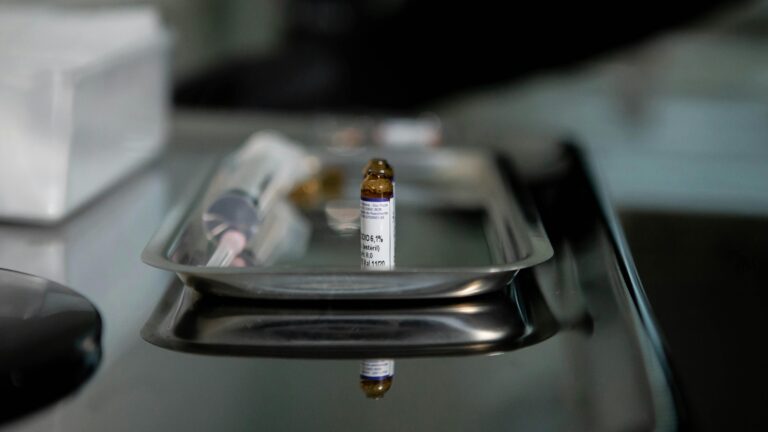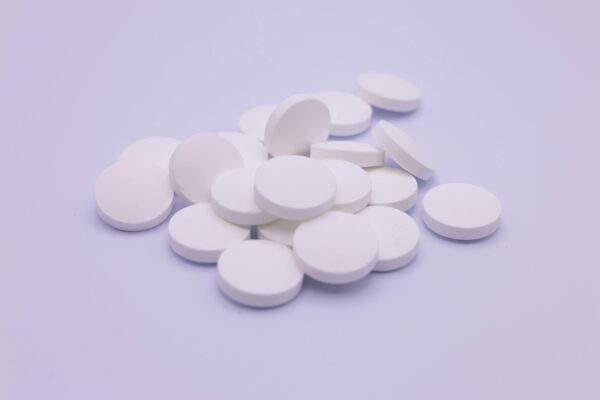Erectile dysfunction (ED) is more common than most men care to admit. But don’t worry—if you’re looking for answers, you’re in the right place. One potential treatment that’s been gaining attention is papaverine, a medication known for its ability to improve blood flow. In this article, we’ll dive deep into what papaverine is, how it works, its potential benefits, and what you need to know before considering it as a treatment for ED.
- What Is Papaverine?
- How Does Papaverine Work for Erectile Dysfunction?
- Who Should Consider Papaverine?
- Potential Benefits of Papaverine
- Risks and Side Effects
- How to Use Papaverine Safely
- Alternatives to Papaverine
- How Papaverine Stacks Up Against Other Treatments
- Who Should Avoid Papaverine?
- Final Thoughts: Is Papaverine Right for You?
- Studies and Supporting Evidence
- FAQs: Papaverine and Erectile Dysfunction
- Question: What is papaverine?
- Question: How does papaverine work for erectile dysfunction?
- Question: Is papaverine safe for everyone?
- Question: What are the side effects of papaverine?
- Question: How is papaverine administered for erectile dysfunction?
- Question: Are there alternatives to papaverine for ED?
- Question: Can papaverine be combined with other treatments?
What Is Papaverine?
Papaverine is a vasodilator, which means it works by relaxing the blood vessels and improving blood flow. Originally developed to treat conditions like muscle spasms and certain types of circulatory problems, papaverine has also found its way into the world of ED treatments. It’s not the first-line treatment like Viagra or Cialis, but it’s often used in cases where other medications haven’t been effective.
How Does Papaverine Work for Erectile Dysfunction?
Papaverine acts by relaxing the smooth muscles of blood vessels and increasing blood flow to the penis. Here’s how it works:
- Relaxation of Blood Vessels: Papaverine inhibits an enzyme called phosphodiesterase, which helps smooth muscles relax. This relaxation allows more blood to flow into the erectile tissues.
- Sustained Erection: By improving blood circulation, papaverine can help achieve and maintain an erection, provided there’s adequate stimulation.
- Injection Therapy: Unlike oral medications, papaverine is typically injected directly into the base of the penis. Yes, the idea of a needle down there might make you cringe, but many men find it effective and worth the effort.
Who Should Consider Papaverine?
Papaverine is often recommended for men who:
- Have not responded well to oral ED medications like sildenafil or tadalafil.
- Have underlying conditions, such as diabetes or nerve damage, that limit the effectiveness of standard treatments.
- Are looking for an alternative to other invasive procedures like penile implants.
Potential Benefits of Papaverine
- High Effectiveness: For many men, papaverine works when other treatments fail.
- Quick Action: The effects of papaverine injections are usually noticeable within 10-15 minutes.
- Customizable Dosage: The dosage can be tailored to your specific needs under medical supervision.
Risks and Side Effects
Like any medication, papaverine isn’t without its downsides. Here’s what you should know:
- Pain or Discomfort: The injection itself can be uncomfortable, especially the first few times.
- Priapism: This is a prolonged erection lasting more than four hours. While it sounds like a problem you’d want, trust us—it’s not. If this happens, you’ll need immediate medical attention.
- Scarring: Repeated injections can lead to scarring or fibrosis of the penile tissue.
- Dizziness and Nausea: Some men report feeling lightheaded or slightly nauseous after using papaverine.
How to Use Papaverine Safely
If you’re considering papaverine, follow these tips to ensure safety and effectiveness:
- Consult a Specialist: Don’t self-medicate. Always talk to a healthcare provider who specializes in ED treatments.
- Start with a Low Dose: Your doctor will likely begin with a lower dose and adjust as needed.
- Follow Instructions: Improper injection technique can lead to complications, so make sure to follow your doctor’s guidance closely.
- Watch for Side Effects: Be aware of the potential risks and contact your doctor if you notice anything unusual.
Alternatives to Papaverine
While papaverine can be effective, it’s not the only option. Here are some alternatives:
- Oral Medications: Sildenafil (Viagra), tadalafil (Cialis), and vardenafil (Levitra) are the go-to options for most men.
- Vacuum Erection Devices (VEDs): These non-invasive devices help create an erection by drawing blood into the penis.
- Penile Implants: A more permanent solution for men with severe ED.
- Lifestyle Changes: Sometimes, improving your diet, exercising regularly, and reducing stress can make a big difference.
How Papaverine Stacks Up Against Other Treatments
While oral medications are more convenient, papaverine has its place in the ED treatment hierarchy. Here’s a quick comparison:
| Treatment | Convenience | Effectiveness | Side Effects |
|---|---|---|---|
| Papaverine Injection | Moderate | High | Priapism, scarring |
| Sildenafil (Viagra) | High | Moderate to High | Headache, flushing |
| Penile Implant | Low | High | Surgical risks |
Who Should Avoid Papaverine?
While papaverine is generally safe, it’s not suitable for everyone. Avoid it if you:
- Have a history of heart problems or low blood pressure.
- Are taking other medications that might interact with papaverine, such as anticoagulants.
- Have Peyronie’s disease or significant penile scarring.
Final Thoughts: Is Papaverine Right for You?
Papaverine isn’t a one-size-fits-all solution, but for many men, it’s a game-changer. If you’re tired of struggling with ED and other treatments haven’t worked, it might be worth a try. Just make sure you’re working with a knowledgeable healthcare provider to ensure the best possible outcome.
Now that we’ve covered all the ins and outs of papaverine, we hope you feel a little more confident about your options. And hey, if you do decide to give papaverine a shot (literally), just remember—you’re not alone. Plenty of guys have been in your shoes and come out the other side with a big smile (and other things) to show for it.
Studies and Supporting Evidence
Clinical Studies on Papaverine for Erectile Dysfunction
Papaverine’s effectiveness in treating ED has been the subject of various clinical studies over the years. Below are some highlights:
- Papaverine as Monotherapy
A study published in The Journal of Urology found that papaverine injections were effective in over 70% of men with ED who did not respond to oral medications. The study concluded that papaverine is a viable second-line treatment for ED. - Combination Therapy with Phentolamine and Prostaglandin E1
Research in the International Journal of Impotence Research explored the use of papaverine in combination with phentolamine and prostaglandin E1. The results showed significantly improved outcomes compared to papaverine alone, with fewer instances of priapism. - Long-Term Safety of Papaverine Use
A review in Andrology analyzed the long-term effects of papaverine injections. While the treatment was effective, the study emphasized the importance of proper technique and monitoring to minimize risks like fibrosis or scarring.
Additional Resources and Links
For further reading and guidance on papaverine and other ED treatments, check out these reputable resources:
- Mayo Clinic: Comprehensive information on erectile dysfunction and available treatments, including injectable therapies.
- Link: Mayo Clinic ED Guide
- American Urological Association (AUA): Guidelines on the diagnosis and management of erectile dysfunction.
- Link: AUA Guidelines on ED
- WebMD: An easy-to-read overview of papaverine and its role in ED treatment.
- Link: WebMD on Papaverine
- Healthline: Articles on injection therapy, lifestyle modifications, and holistic approaches to managing ED.
- Link: Healthline ED Resources
These studies and resources are excellent starting points for anyone interested in learning more about papaverine’s role in treating ED. We encourage you to discuss these findings with a qualified healthcare provider to determine whether this treatment aligns with your specific needs.
FAQs: Papaverine and Erectile Dysfunction
Question: What is papaverine?
Papaverine is a vasodilator medication that relaxes blood vessels and improves blood flow. It is often used as an injection therapy to treat erectile dysfunction, especially in cases where other treatments have failed.
Question: How does papaverine work for erectile dysfunction?
Papaverine works by relaxing the smooth muscles of the blood vessels, increasing blood flow to the penis. This helps achieve and maintain an erection when combined with appropriate stimulation.
Question: Is papaverine safe for everyone?
While papaverine is generally safe, it may not be suitable for individuals with certain conditions like heart problems, low blood pressure, or Peyronie’s disease. Consult a healthcare provider before using papaverine.
Question: What are the side effects of papaverine?
Common side effects include mild pain at the injection site, dizziness, and nausea. Serious risks like priapism (prolonged erection) or scarring can occur with improper use or frequent injections.
Question: How is papaverine administered for erectile dysfunction?
Papaverine is administered as an injection directly into the base of the penis. A healthcare provider will guide you on the proper technique to minimize risks and ensure effectiveness.
Question: Are there alternatives to papaverine for ED?
Yes, alternatives include oral medications like sildenafil (Viagra) or tadalafil (Cialis), vacuum erection devices, and surgical options like penile implants. Lifestyle changes can also improve erectile function.
Question: Can papaverine be combined with other treatments?
Yes, papaverine is sometimes used in combination with other medications like phentolamine or prostaglandin E1 for improved results. This should only be done under medical supervision.
Disclaimer: This article is for informational purposes only and should not replace professional medical advice. Always consult with a healthcare provider before starting any new treatment.





